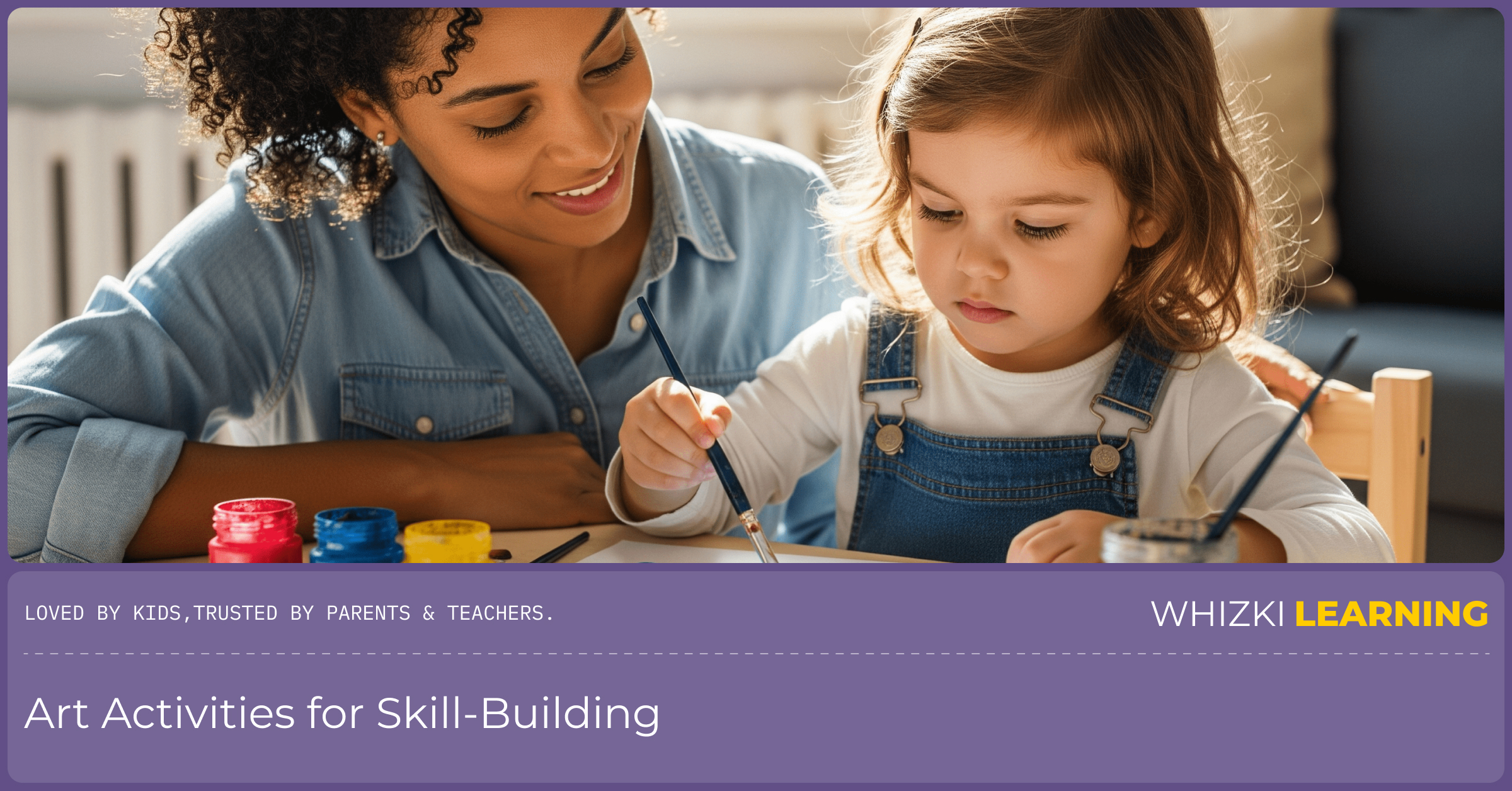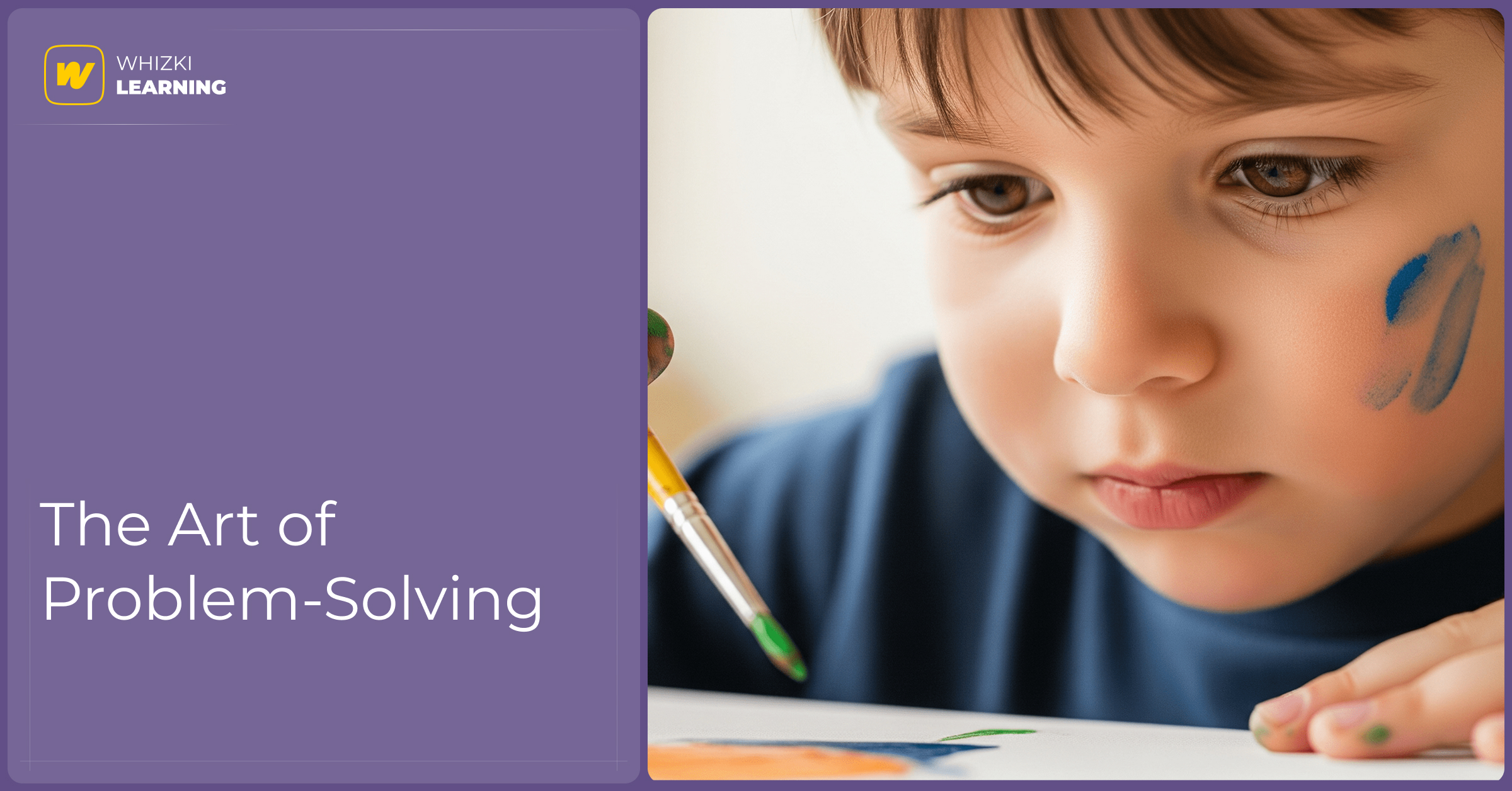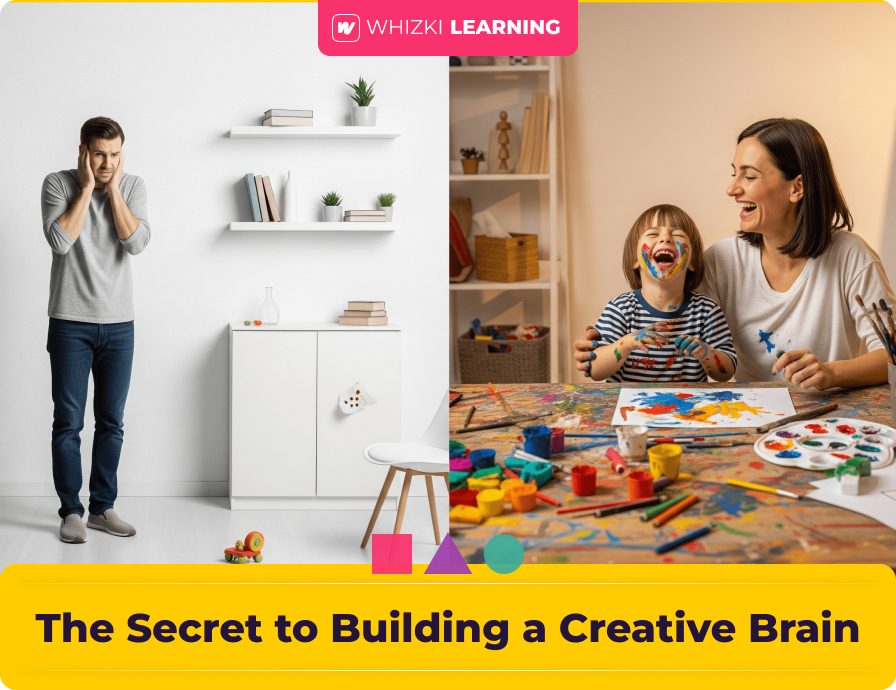Hey there, parents! Let's face it: getting the paint out can feel like a major project. But what if we saw that artistic chaos not as a chore, but as a crucial moment for learning? At Whizki Learning, we know that creative activities are not just about making pretty pictures. They are a fundamental way for kids to develop critical thinking, fine motor skills, and emotional expression. It’s the ultimate form of screen-free learning, and it’s messy, beautiful, and totally worth it.
This guide will give you the green light to embrace the mess and help you see the incredible value in every scribbled line and every dollop of paint. Let's unleash your child’s inner artist and build a lifelong love for creativity and self-expression.
Chapter 1: Fine Motor Fun and Beyond
From holding a crayon to squeezing glue, every artistic activity is a workout for a child’s hands. All that scribbling, painting, and cutting is a fantastic way to strengthen the small muscles in their fingers and hands, which are essential for future skills like writing. Art is the perfect warm-up for our educational workbooks, and a great example of play-based learning at its best. For more on this, check out our article on handwriting development.
Easy-Peasy Art Activities for Skill-Building:
Sensory Painting: Mix paint with sand, coffee grounds, or glitter for a different tactile experience. This adds a sensory element to their art and engages more parts of their brain.
Scissor Skills Practice: Give your child a variety of paper and let them snip away. It's a simple activity that builds hand-eye coordination and fine motor strength.
Playdough Sculptures: Let your child use playdough to create whatever they want. Rolling, squishing, and shaping are all excellent for strengthening their hands and encouraging creative thinking.

Chapter 2: The Art of Problem-Solving
When a child sits down with a blank piece of paper or a lump of clay, they are faced with a challenge: what should I create? They have to make choices about colors, shapes, and what story they want to tell. Every decision is a mini-problem they are solving on their own. This is a foundational part of building creative confidence and resilience. They learn that there are no 'mistakes' in art, just different paths to an outcome. It's a great companion to the skills we talked about in our article on building forts.
How to Encourage Problem-Solving in Art:
Ask Open-Ended Questions: Instead of, “What is that?” try asking, “Tell me about your drawing.” This encourages them to tell a story and explain their creative choices.
Introduce New Materials: Bring out different materials and see how they combine them. What happens when they add yarn to a drawing? Or use a sponge to paint instead of a brush?
Focus on the Process, Not the Product: Praise their effort, not just the final result. “I love how you chose all those different colors!” or “You worked so hard on that!” This teaches them to value the process of creation.

Chapter 3: Art as a Form of Self-Expression
For young children who don't yet have the words to express big emotions, art is a powerful outlet. They might scribble angrily with a dark crayon, or paint a vibrant, happy scene to show their joy. It's a way for them to communicate their inner world and process their feelings. This is a key part of emotional development and a beautiful way for them to connect with their own unique voice.
So, the next time your child asks for a piece of paper, hand it to them with a smile. Don’t worry about the mess; see the learning. By giving them the freedom to create, you’re not just raising an artist; you’re raising a resilient, confident, and creative thinker. Our mission at Whizki Learning is to provide tools that complement these wonderful, hands-on activities. Our educational workbooks are the perfect companion for a budding artist, with activities that build fine motor skills and creative expression. Ready to unleash their inner artist? Explore our full collection of educational workbooks and activities today!






